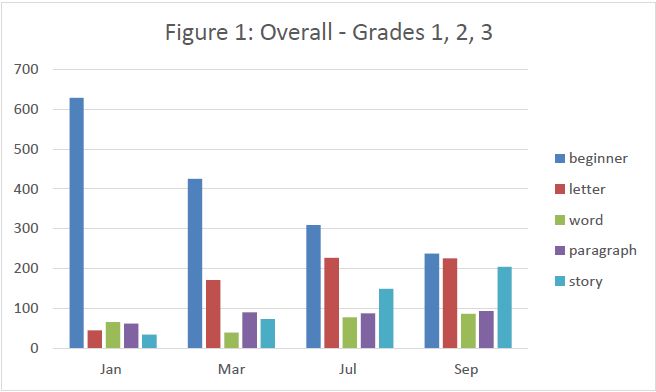LOCAL TALENT PIONEERING READING FOR MEANING
- Axium Education

- Mar 16, 2020
- 3 min read
For the last year Axium has been piloting the Teaching at the Right Level (TaRL) approach in isiXhosa literacy with foundation phase learners in grade R-3. We are one year into our TaRL pilot and while still in the early stages of this trial there is encouraging evidence of the impact of the TaRL approach on children’s learning in the first three years of school.
Axium’s Nobalisa* Program works with young people from the local communities to do literacy and numeracy work with young children at fifteen primary schools and thirteen community reading clubs. The “Nobalisas” work alongside classroom teachers, who are often faced with overwhelming class sizes, to grow a love of stories and reading in young children, using the Teaching at the Right Level (TaRL) approach.
We have found the TaRL model to be a flexible and versatile one with only two non-negotiables; learners are grouped into five levels (beginner, letter, word, paragraph and story)** based on their current level of reading competence and secondly that they are then taught content that is appropriate for that ability level.
As Sekiwe, Nobalisa Mentor, explains, “TaRL is to teach at the right level. It doesn’t matter which grade you are in. You can be in grade two but in the ‘beginner level’ so I have to teach you at your level.”
The graph below displays TaRL assessment results for the ~800 students involved in the TaRL pilot programme in 2019, across six primary schools. TaRL assessment data was gathered at four points during the 2019 school year. Sekiwe explains, “Every term we pull learners aside individually and take them through a series of reading tasks to assess them.” We don’t call it a test to avoid the anxiety the word 'assessment/test’ can bring especially to young children. “We simply say sizuqalanisa ukufunda - we are getting used to reading.”

Given that we do not have data from control schools, conclusions from this data are suggestive rather than conclusive. However, this graph very clearly shows us that what we want to see happening – children progressing from one level to another over the course of the year – is indeed happening. The graphs are however, unable to tell us whether this is happening at a faster rate than “normal”, whether “normal” refers to what has happened in previous years, or some kind of rural average progression.
When we compare what happened in 2018 (before TaRL was introduced) and what happened in 2019 (when TaRL was piloted for the first time), the data suggests that the implementation of TaRL may well be responsible for these improvements happening more quickly than before. These improvements can be summarized in the following ways:
In summary:
· Grade 1 children in 2019 learnt their letters at more than 4 times the rate of similar children (in the same schools) who were in Grade 1 the previous year.
· Grade 2 children in 2019 developed their passage reading skills at almost twice the rate of children in Grade 2 in 2018.
· And in Grade 3, children’s passage reading improved more than three times as much in 2019 than in 2018.
Together these trends above represent encouraging evidence of the impact of the Teaching at the Right Level approach on children’s learning in the first three years of school.
During the past year, Axium’s Nobalisa Programme has been gearing for growth through some exciting developments in standardizing our programme across schools, clubs, leadership and curriculum. This year, we will be standardizing TaRL across all the primary schools that we work with, without minimizing the need to consider contextual differences. Whereas the TaRL pilot did not focus specifically on reading for meaning, the particular focus going forward will be to incorporate literacy skills with a focus on reading for meaning. There are 55 Nobalisas working at Axium this year who are trained in TaRL methodology and best practice. The Nobalisa team will work across 15 different schools with 2100 children on a weekly basis.
“You are going to see, it’s going to keep growing this year.” Sekiwe states excitedly.
*In isiXhosa, Nobalisa means Community Reader.
**The goal for Beginner and Letter levels is to build confidence and self-expression, make decoding text less scary, and provide a firm foundation for recognising letters and phonemes. Children at the Word Level are able to read words by sounding out letters and phonemes. They begin to build fluency, recognising the structure of sentences and creating their own sentences. At Paragraph level, instructors aim to strengthen learners’ understanding of grammar and punctuation, instil a habit of daily reading, and strengthen reading comprehension. Children at Story level are fluent readers, capable of reading longer texts. Instructors focus on improving comprehension, creativity and more complex texts.

















Comments